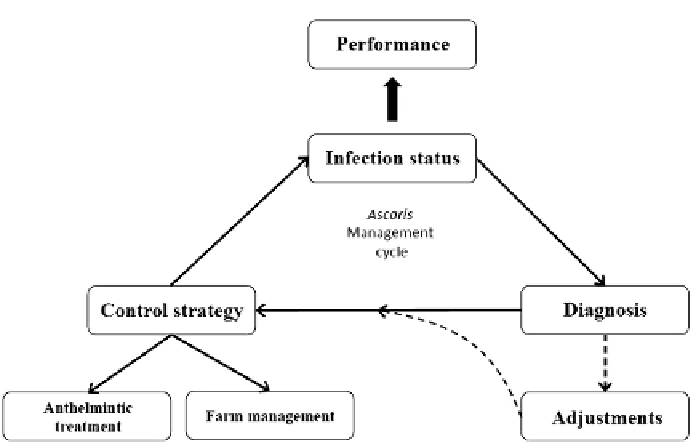Biology Reference
In-Depth Information
FIGURE 16.1
The
Ascaris
control/management cycle. This conceptual framework can
be applied to continuously improve the worm control management on a pig farm.
Parameters of pig performance are assessed as well as the worm status of the pig herd,
using the diagnostic methods at hand. If necessary, adjustments to the anthelmintic treat-
ment strategies and farm management can be implemented to increase performance and
reduce
A. suum
presence on the farm. In time, these changes are evaluated and further
adjustments could be applied during the next cycle.
the evaluation of the currently applied control strategies. If necessary,
adjustments to the control program could be implemented and their effect
on the infection intensity on the farm can be investigated in subsequent
fattening rounds. The cyclic relationship between control practices and
their evaluation by diagnostics is shown in
Figure 16.1
.
DIAGNOSIS OF PIG ASCARIASIS
Infections with
A. suum
very seldom cause clinical disease. Therefore,
such infections typically remain unrecognized by farmers and their
veterinarians. In a study by Theodoropoulos et al.
21
it was shown that
most of the farmers considered the magnitude of worm infection in their
own farm to be insignificant. Nevertheless, almost all farmers used
anthelmintics to treat their stock prophylactically. The same story is
applicable to Danish pig farmers,
22
and probably the majority of farmers
worldwide. Very rarely do pig farmers investigate if the actions they
undertake to control ascariasis on their farm are the most appropriate and
whether these actions significantly improve the situation. To be able to
evaluate the evolution of the infection status and therefore the efficacy of

